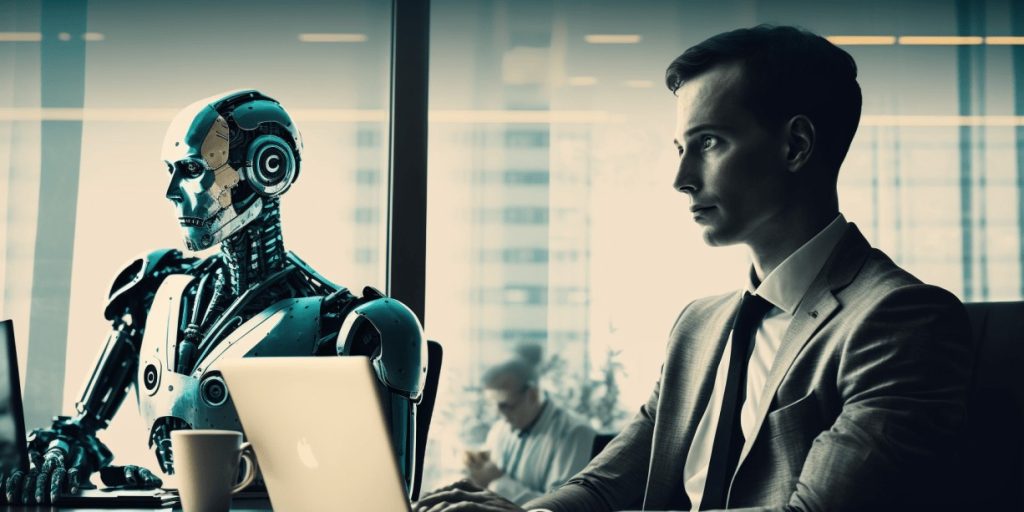
In today’s rapidly evolving technological landscape, the integration of artificial intelligence (A.I.) and robotics is not just an advantage; it’s becoming a necessity. Companies that resist adapting to these innovations risk falling behind in their industries, facing challenges that can hinder growth and sustainability. Understanding the potential pitfalls of not embracing these technologies is crucial for businesses aiming to stay competitive.
1. Loss of Competitive Edge
One of the most significant risks for companies that fail to adopt A.I. and robotics is the loss of their competitive edge. In many industries, competitors who embrace these technologies can operate more efficiently, reduce costs, and provide better customer experiences. A.I. can optimize operations by analyzing large datasets to predict trends, automate routine tasks, and personalize customer interactions. Meanwhile, robotics can enhance production processes, improve accuracy, and reduce human error. Companies that neglect these advancements may find themselves outpaced by rivals who are quicker to adapt, leading to a decline in market share.
2. Increased Operational Costs
Companies that resist implementing A.I. and robotics often face higher operational costs compared to those that do. Manual processes and outdated technologies can lead to inefficiencies that drain resources. For example, tasks that could be automated using A.I. or robotics require more time and manpower, increasing labor costs and the potential for human error. These inefficiencies can compound over time, making it more challenging for businesses to maintain profitability, especially as competitors optimize their operations and reduce expenses.
3. Decreased Innovation and Growth Potential
Innovation is the lifeblood of any successful business. Companies that are slow to adopt A.I. and robotics may struggle to innovate at the pace needed to keep up with industry changes. A.I. drives innovation by providing insights that lead to the development of new products, services, and business models. Robotics, on the other hand, can enable new manufacturing techniques, improve product quality, and allow for rapid prototyping. Without these tools, a company may find itself unable to capitalize on new opportunities, leading to stagnation and missed growth potential.
4. Lower Employee Productivity and Morale
While there is a misconception that robotics and A.I. take jobs away from humans, the reality is that these technologies can greatly enhance employee productivity and job satisfaction. A.I. can handle mundane and repetitive tasks, allowing employees to focus on more creative and strategic activities. Robotics can take over dangerous or physically demanding jobs, improving workplace safety. Companies that do not adopt these technologies may struggle with low employee morale, as workers are left to perform tedious tasks without the support of automation. This can lead to higher turnover rates and difficulty attracting top talent.

5. Missed Opportunities in Customer Experience
In today’s market, customer experience is a key differentiator. A.I. enables companies to offer personalized experiences by analyzing customer data and predicting their needs. Chatbots, powered by A.I., can provide instant customer service, while predictive analytics can help tailor marketing efforts to individual preferences. Companies that do not leverage these capabilities may fail to meet customer expectations, leading to lower satisfaction and loyalty. As consumers become more accustomed to personalized and responsive service, businesses that do not keep up may lose customers to competitors who offer superior experiences.
6. Difficulty in Scaling Operations
As businesses grow, the ability to scale operations efficiently becomes critical. A.I. and robotics provide the tools needed to manage increased demand without a proportional increase in costs. For example, A.I. can optimize supply chain management by predicting demand fluctuations, while robotics can increase production capacity without compromising quality. Companies that do not adopt these technologies may find it difficult to scale effectively, leading to bottlenecks, delays, and a decline in service quality as they expand.
7. Vulnerability to Market Disruption
Industries are constantly evolving, and new technologies are often at the forefront of this change. Companies that resist adopting A.I. and robotics are more vulnerable to market disruption. New entrants or agile competitors that utilize these technologies can quickly gain a foothold, offering innovative products or services at lower costs. This can leave established companies struggling to keep up, leading to a loss of relevance in the market. In extreme cases, failure to adapt can result in obsolescence, as was seen with companies that did not embrace digital transformation during the rise of the internet.
Conclusion: The Imperative to Adapt
The challenges faced by companies that do not adapt to A.I. and robotics are significant. From losing their competitive edge to struggling with operational inefficiencies, the risks are clear. In an era where technology drives innovation, growth, and customer satisfaction, businesses cannot afford to lag behind. Adopting A.I. and robotics is not just about staying current—it’s about future-proofing the organization, ensuring that it remains relevant, competitive, and capable of thriving in a rapidly changing world.
To succeed, companies must embrace these technologies, integrating them into their operations, culture, and strategies. By doing so, they can unlock new levels of efficiency, innovation, and customer engagement, securing their place in the market for years to come.


